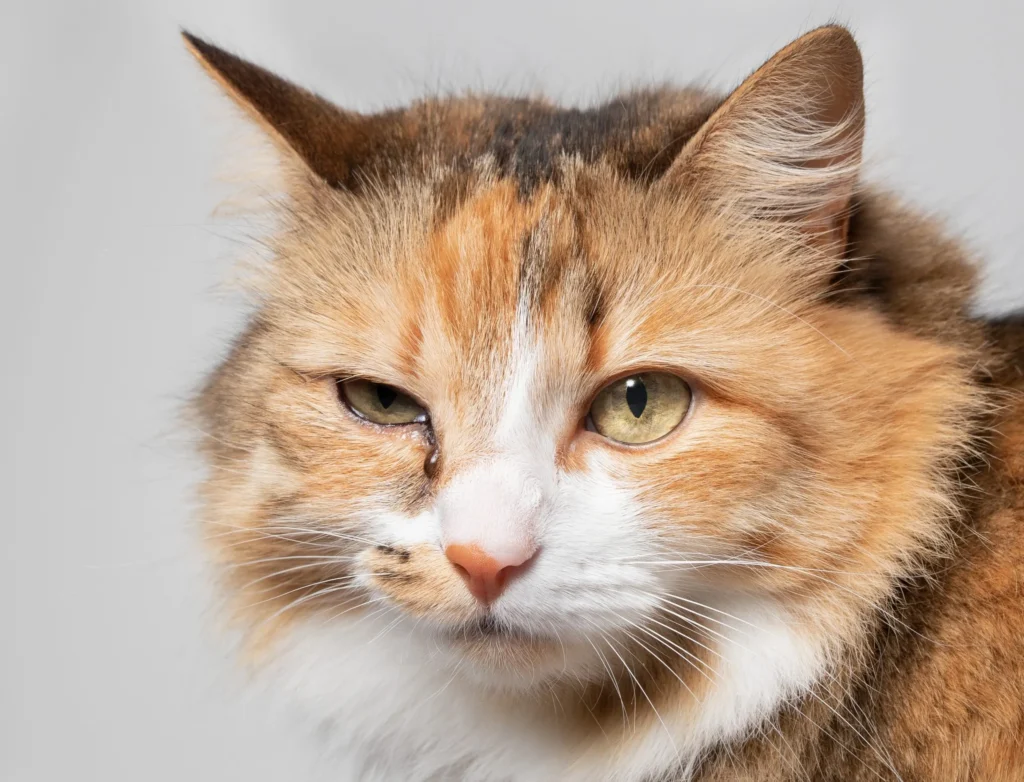
Feline leukemia virus in cats (FeLV) is one of the most serious infectious diseases affecting the feline population. Caused by a retrovirus, feline leukemia weakens a cat’s immune system, making them more vulnerable to infections, cancers, and other life-threatening conditions. Sadly, many cats diagnosed with FeLV have a shortened lifespan, but with proper care and preventive measures, the risks can be managed.
In this article, we’ll cover what feline leukemia virus is, how it spreads, its symptoms, treatment options, and prevention through vaccination.
What is Feline Leukemia Virus?
Feline leukemia virus is a retrovirus, meaning it inserts its genetic material into a cat’s DNA. This can disrupt normal cell function, kill healthy cells, or even cause them to mutate and develop into cancerous cells.
Once infected, the median survival time for cats with FeLV is about 2.5 years, though some may live longer with supportive care.
How Feline Leukemia Spreads
Unlike feline immunodeficiency virus (FIV), FeLV is most often spread through close social contact. It can pass between cats via:
Grooming and licking
Shared food and water bowls
Shared litter boxes
Saliva, urine, and nasal secretions
Mother-to-kitten transmission (though many pregnancies fail before birth due to the virus)
Outdoor cats and those living in multi-cat households are at the greatest risk.
Symptoms of Feline Leukemia in Cats
The symptoms of feline leukemia virus in cats vary widely and may progress slowly or quickly. Common signs include:
Loss of appetite and weight loss
Lethargy and weakness
Recurring infections (respiratory, skin, or bladder)
Anemia (low red blood cell count)
Pancytopenia (low red and white blood cells)
Tumors or leukemia (blood cancer)
Some cats may appear healthy for months or even years before showing symptoms, making regular testing important.
Diagnosis of Feline Leukemia
FeLV is diagnosed through a blood test that detects viral antigens (not antibodies, like in FIV). In many cases, a confirmatory test is performed to ensure accurate results.
A positive test usually indicates an active infection, which can progress if not managed carefully.
Treatment and Prognosis
Unfortunately, there is no cure for feline leukemia virus in cats. Since the virus integrates into the DNA, it cannot be eliminated once it spreads to the bone marrow.
Treatment focuses on:
Supportive care to improve quality of life
Preventing secondary infections with antibiotics
Good nutrition and stress reduction
Regular veterinary monitoring
While some cats live for several years after diagnosis, others may develop severe illness within months.
Prevention Through Vaccination
The good news is that feline leukemia can often be prevented. The feline leukemia vaccine has proven effective in protecting cats from infection.
Kittens: Almost all kittens should receive at least two doses, as they are highly vulnerable.
Adult Cats: Indoor-only cats may not need it, but cats with outdoor access or those living with other cats should be vaccinated.
Effectiveness: No vaccine is 100% foolproof, but vaccinated cats have a much lower risk of developing FeLV, and if they do, symptoms are often milder.
For the latest vaccination recommendations, you can review guidelines from the American Association of Feline Practitioners.
Final Thoughts
Feline leukemia virus in cats is a devastating disease, but awareness, early detection, and prevention can make a big difference. Regular testing, keeping cats indoors, reducing exposure risks, and vaccinating kittens are the best defenses against FeLV.
With the right care, cats living with feline leukemia can still enjoy a good quality of life, even if their lifespan is shortened.